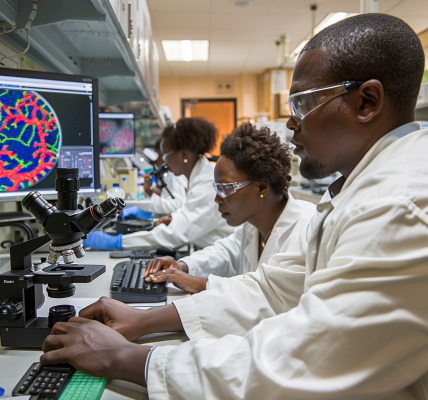Nearsightedness, also known as myopia, is becoming increasingly prevalent, with optometry researchers estimating that half of the global population will require corrective lenses for myopia by 2050 if current trends persist. This represents a significant increase from 23% in 2000 and less than 10% in certain countries, indicating a growing concern.
The rising rates of myopia come with substantial healthcare costs, with the United States alone spending up to US$7.2 billion annually on corrective lenses, eye exams, and related expenses. Understanding the factors contributing to this surge in myopia is crucial in addressing this widespread issue.
Understanding Myopia Development
Although having myopic parents increases the likelihood of developing nearsightedness, it is primarily influenced by behavioral rather than genetic factors. Research in optometry has shed light on the progression of myopia, particularly through studies on visual development in young animals like infant chickens.
By manipulating the visual input to these animals using specialized helmets, researchers have observed that distorted vision leads to abnormal eye growth, resulting in myopia. This process is progressive, as the eyes continue to elongate in response to blurred vision, creating a cycle of worsening myopia.
Behavioral Impact on Myopia
Recent studies focusing on children and their parents have highlighted a significant behavioral aspect contributing to the rise in myopia. The excessive time spent on activities that involve close-up focusing, such as screen time and near work, has been identified as a key factor driving the increasing prevalence of myopia.
As individuals engage in prolonged periods of near work, such as reading or using electronic devices, the eyes are subjected to constant strain, potentially leading to the development and progression of myopia. This behavioral shift towards activities that demand close visual attention has been linked to the escalating rates of myopia observed globally.
Addressing the Myopia Epidemic
Given the significant impact of myopia on public health and healthcare expenditure, proactive measures are essential to mitigate its prevalence. Encouraging outdoor activities and reducing screen time, especially among children, can help alleviate the strain on the eyes and potentially reduce the risk of myopia development.
Educating individuals, particularly parents and caregivers, about the importance of maintaining visual hygiene and implementing regular breaks from near work activities is crucial in promoting eye health and preventing myopia progression. By fostering awareness and adopting preventive strategies, it is possible to curb the escalating rates of myopia and safeguard visual well-being.





